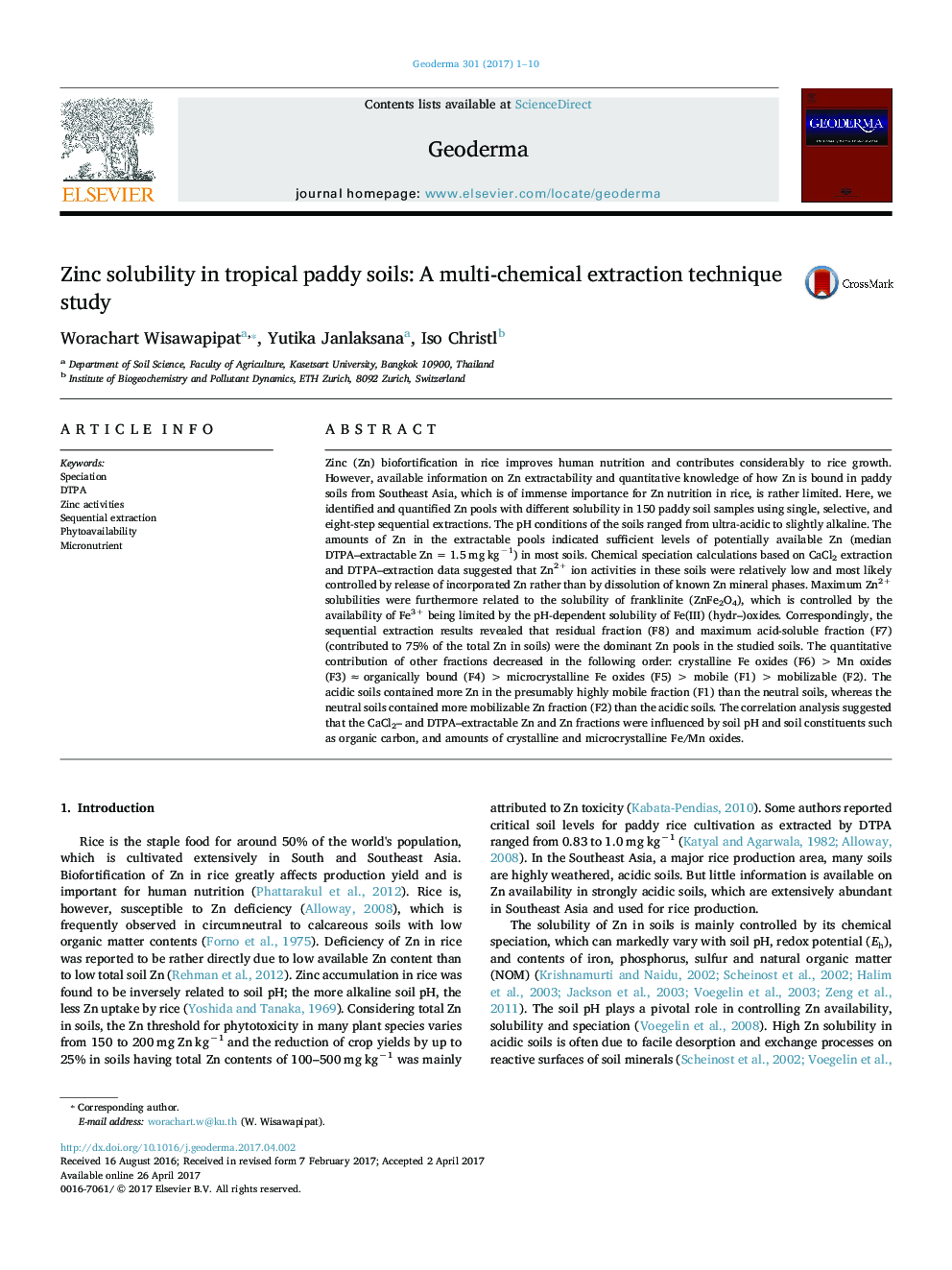| کد مقاله | کد نشریه | سال انتشار | مقاله انگلیسی | نسخه تمام متن |
|---|---|---|---|---|
| 5770315 | 1629416 | 2017 | 10 صفحه PDF | دانلود رایگان |
- Zinc incorporated in stable mineral phases dominated the Zn pools.
- Only small fractions of total Zn were mobile or easily mobilizable.
- Zn2+ activities were limited by the solubility of ZnFe2O4.
- The pH-dependent solubility of Fe(III) minerals affects Zn2+ availability in tropical paddy soils.
Zinc (Zn) biofortification in rice improves human nutrition and contributes considerably to rice growth. However, available information on Zn extractability and quantitative knowledge of how Zn is bound in paddy soils from Southeast Asia, which is of immense importance for Zn nutrition in rice, is rather limited. Here, we identified and quantified Zn pools with different solubility in 150 paddy soil samples using single, selective, and eight-step sequential extractions. The pH conditions of the soils ranged from ultra-acidic to slightly alkaline. The amounts of Zn in the extractable pools indicated sufficient levels of potentially available Zn (median DTPA-extractable Zn = 1.5 mg kgâ1) in most soils. Chemical speciation calculations based on CaCl2 extraction and DTPA-extraction data suggested that Zn2+ ion activities in these soils were relatively low and most likely controlled by release of incorporated Zn rather than by dissolution of known Zn mineral phases. Maximum Zn2+ solubilities were furthermore related to the solubility of franklinite (ZnFe2O4), which is controlled by the availability of Fe3+ being limited by the pH-dependent solubility of Fe(III) (hydr-)oxides. Correspondingly, the sequential extraction results revealed that residual fraction (F8) and maximum acid-soluble fraction (F7) (contributed to 75% of the total Zn in soils) were the dominant Zn pools in the studied soils. The quantitative contribution of other fractions decreased in the following order: crystalline Fe oxides (F6) > Mn oxides (F3) â organically bound (F4) > microcrystalline Fe oxides (F5) > mobile (F1) > mobilizable (F2). The acidic soils contained more Zn in the presumably highly mobile fraction (F1) than the neutral soils, whereas the neutral soils contained more mobilizable Zn fraction (F2) than the acidic soils. The correlation analysis suggested that the CaCl2- and DTPA-extractable Zn and Zn fractions were influenced by soil pH and soil constituents such as organic carbon, and amounts of crystalline and microcrystalline Fe/Mn oxides.
395
Journal: Geoderma - Volume 301, 1 September 2017, Pages 1-10
